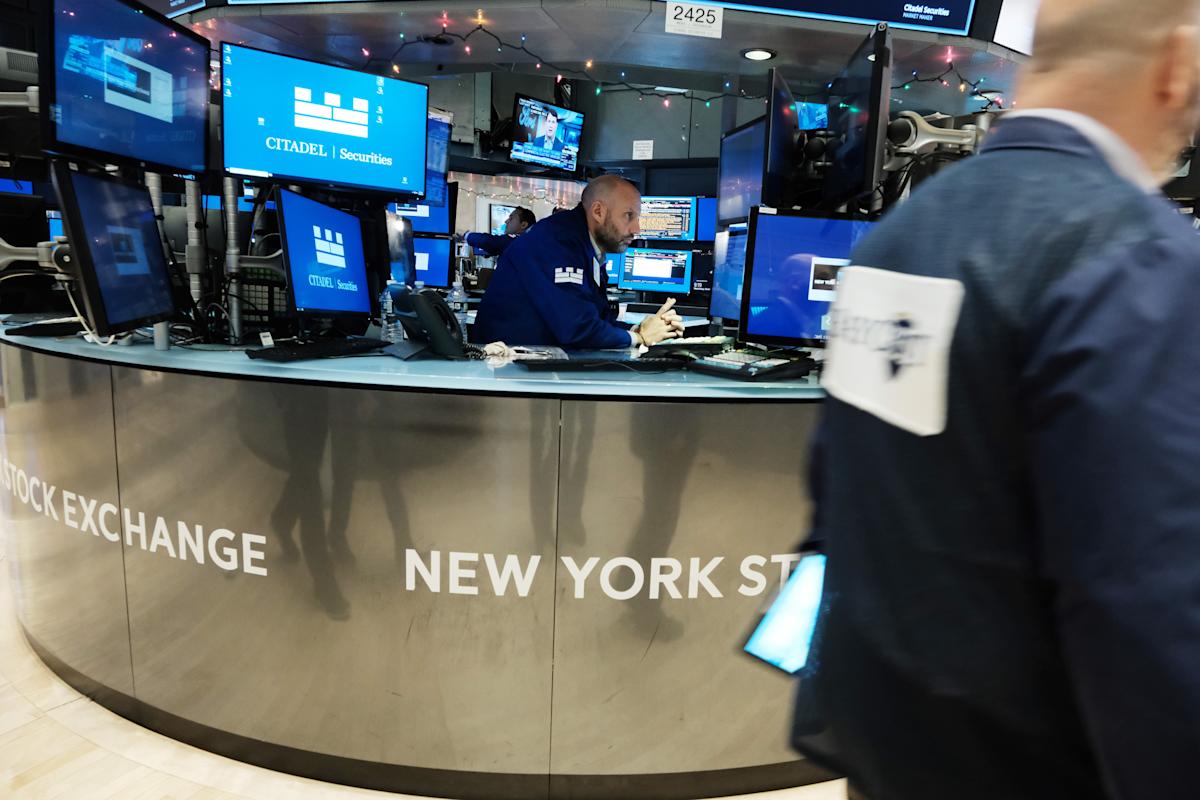Stock futures rose Friday morning as investors considered a key inflation report ahead of the Federal Reserve’s final policy-setting meeting of the year next week.
The Labor Department’s Consumer Price Index (CPI) showed yet another multi-decade high rate of inflation for November. The CPI climbed by 6.8% in November compared to last year, marking the fastest annual increase since June 1982. This rate matched consensus economists’ estimates, according to Bloomberg data, but accelerated compared to the 6.2% year-over-year rate from the prior month. And even excluding more volatile food and energy prices, the so-called core CPI rose by 4.9% over last year for the fastest increase in about three decades.
“What we’re looking for is a deceleration as we go forward over the course of 2022,” Luke Tilley, Wilmington Trust chief economist, told Yahoo Finance Live on Thursday, ahead of the CPI print.
“That doesn’t mean prices are going to go down, it’s just a question of, are they going to go up as much in 2022 as in 2021 without the kind of fiscal stimulus we’ve had this year? And we don’t think that that’s going to happen, because it won’t be as much of a push on the demand side,” he added. “And then on the supply side, we’re looking for the labor market to improve, more people returning to work, and of course the delivery and the ports to improve.”
Other recent data have further underscored the present tightness on the supply side of the economy. Weekly U.S. jobless claims plunged more than expected to reach the lowest level since 1969 last week, coming in even below pre-pandemic levels. And U.S. job openings came in at more than 11 million for only the second time on record in October.
“Wage increases are probably on the agenda for next year. That’s part of the broadening of inflationary pressures that we’ve already started to see come through in some of that CPI data,” Seema Shah, Principal Global Investors chief strategist, told Yahoo Finance Live on Thursday. “But I have to say that we’re not so worried because we’re starting to see other parts of the inflation picture actually starting to fade. So at the end of next year, 12 months from now, we’re not expecting the kind of 6-7% CPI numbers … We’re thinking more the 3% level for 12 months time.”
Given the backdrop of elevated inflation, Federal Reserve officials have adopted more hawkish rhetoric about the monetary policy path forward. Some pundits suggested more rotation could occur in U.S. equity markets beneath the surface as investors price in expectations for tighter Fed policy to rein in inflation. The Federal Open Market Committee is slated to hold its final two-day monetary policy-setting meeting of the year next week.
“If we go back to the bulk of the second half of 2020 and for much of this year, the pendulum of risk-on, risk-off in the market was really simply occurring just below the surface of the index, of the S&P 500 —meaning that when there was a risk-on rally, it was value and it was cyclicals,” Craig Fehr, principal and leader of investment strategy for Edward Jones, told Yahoo Finance Live on Thursday. “And when it was risk-off and the risk appetite was declining, it was tech that was the safe haven.”
“What we’re seeing is a transition now, particularly as the Fed is signaling a withdrawal of some of this excess liquidity and stimulus that’s been in place for quite some time,” he added. “The market isn’t going to run directly into high-valuation, perhaps tech names broadly like it has over the past year-and-a-half. I think we’re going to see more discernment.”
—
8:36 a.m. ET: CPI inflation posts biggest year-over-year increase since 1982
The Labor Department’s Consumer Price Index showed the largest annual increase in inflation since 1982, signaling persistently elevated price pressures in the U.S. economy.
The broadest measure of CPI grew at a 6.8% year-over-year rate in November, or the fastest rise in nearly four decades. This accelerated from the prior month’s 6.2% annual rise. On a month-over-month basis, the CPI rose 0.8%, coming in hotter than the 0.7% monthly rate consensus economists were expecting.
—
7:20 a.m. ET Friday: Stock futures extend gains ahead of CPI report
Here’s where markets were trading ahead of the opening bell:
-
S&P 500 futures (ES=F): +16.75 points (+0.36%), to 4,683.75
-
Dow futures (YM=F): +93 points (+0.26%), to 35,846.00
-
Nasdaq futures (NQ=F): +57.25 points (+0.35%) to 16,206.00
-
Crude (CL=F): +$0.66 (+0.93%) to $71.60 a barrel
-
Gold (GC=F): -$3.50 (-0.2%) to $1,773.20 per ounce
-
10-year Treasury (^TNX): +2.9 bps to yield 1.516%
—
6:25 p.m. ET Thursday: Stock futures open higher
Here were the main moves in markets in late trading on Thursday:
-
S&P 500 futures (ES=F): +6.5 points (+0.14%), to 4,673.50
-
Dow futures (YM=F): +34 points (+0.1%), to 35,787.00
-
Nasdaq futures (NQ=F): +25.25 points (+0.16%) to 16,174.00
—
Emily McCormick is a reporter for Yahoo Finance. Follow her on Twitter
